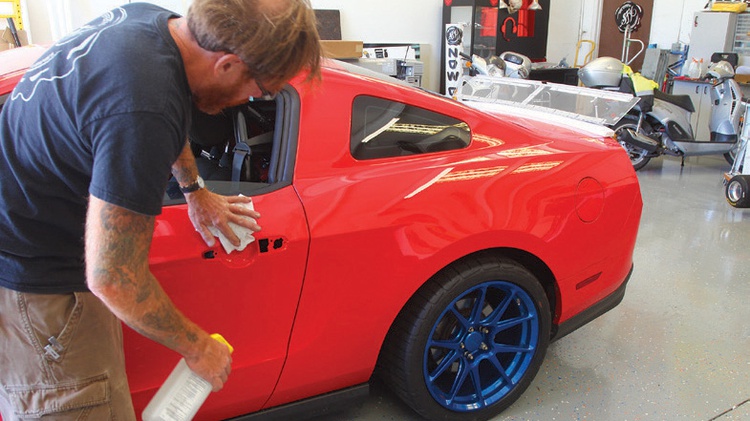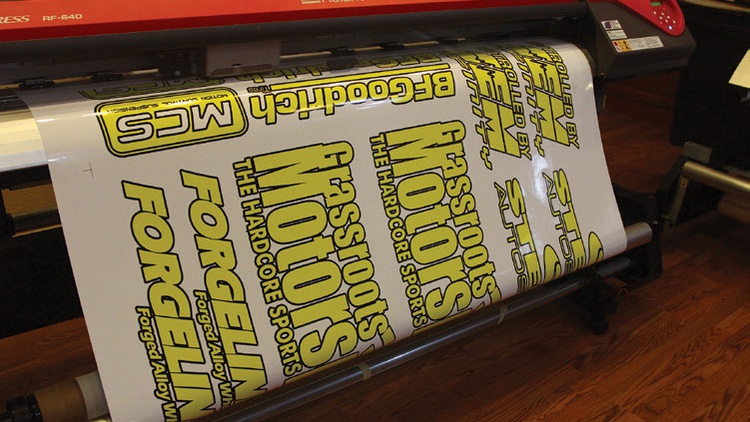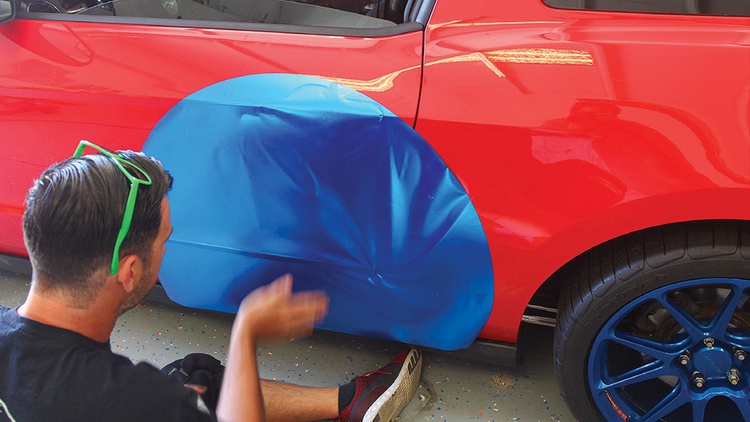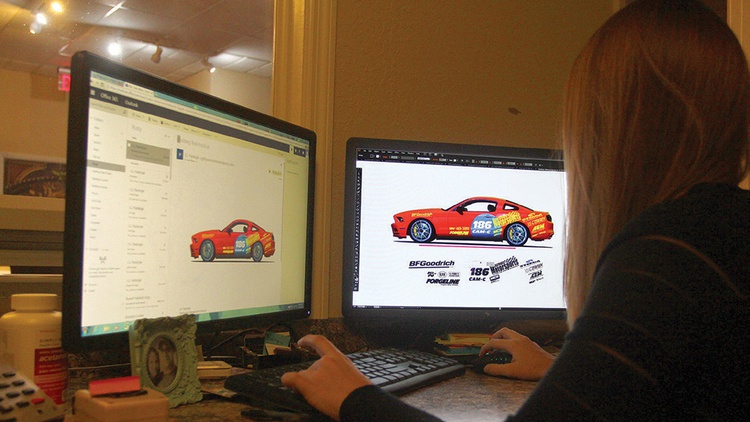Adding a livery to a competition car usually means a full vinyl wrap. Wraps are actually a cost-effective alternative to a full paint job and can be easily removed at the end of the season.
But even wraps have their downside. Despite the versatility of the initial design, making changes once the wrap is in place is difficult. And although a wrap …
1. Pros Are Pros for a Reason:
The pros have access to perfectly scaled digital illustrations of your car, allowing them to precisely size your decals before they even print and cut them. Having a pro do a digital mockup of your vinyl before hitting print can save lots of trouble.
2. Prep Is Everything:

Use a wax-removing cleaner to prep the car surface, followed by a wipe-down with 90-percent alcohol. This cleaning helps the vinyl adhere evenly, and prevents foreign particles and moisture from creating bubbles and causing poor adhesion.
3. You Get What You Pay For:

Cheap vinyl may save you a few bucks up front, but it can be hard to work with and end up shrunken or faded down the road. The folks at Side Effects are big fans of Oracal, a German brand of vinyl. It’s a little more expensive than average, but it’s much easier to install and releases cleanly even years later. Unlike other brands, it has microscopic cross-hatches in the adhesive layer to make working out bubbles far easier.
4. For Contours, Work High to Low:

Cars are three-dimensional objects, so your vinyl will have to work around these curves. When working with large sheets of vinyl, work from the peaks to the valleys. Good vinyl will let you stick…
Click Here to Read the Full Original Article at Grassroots Motorsports Online Articles…

